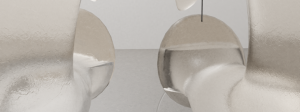Eunoe Clarice Calvo-Pinsolle Apr 2022 -
How does our memory work, whether it’s visual, olfactory or sonic? How are our memories woven? Our brain is constantly receiving events that it sorts, stores, associates with emotions and, sometimes, erases. For several years, Clarice Calvo-Pinsolle followed EMDR therapy (Eye Movement Desensitization and Reprocessing) which aims to process traumatic memories through bi-alternated ocular and auditory stimuli. This experience led her to focus her research on the relationship between sounds and memory and, more specifically, on traumatic memory and memories that disappear following shocks.
She is interested in two parts of the brain in particular: the amygdala and the hippocampus. The amygdala plays an essential role in the management of emotions and reactions to fears. It is connected to the hippocampus, which is involved in the memory process and in the formation of memories. During a serious traumatic event, the body sets up exceptional neuro-biological and neuro-physiological safeguard mechanisms, which are similar to a kind of disconnection, at the origin of traumatic memory. The amygdala is then disconnected from the hippocampus which no longer receives the content of emotional implicit memory. This cannot be completely transformed into an autobiographical and affective declarative memory. Total or partial amnesia may set in.
Clarice Calvo-Pinsolle transforms the hold of the La Pop boat into an organic space echoing the interior of the human body. She invites us to let ourselves be carried away by a spatialized sound composition created with the help of researchers and accompanied by waterlogged glass sculptures that interconnect and self-irrigate. This is a reflection on the connection, the flow, the network, the reconnection to one's own memories and to one's internal ecosystems.



